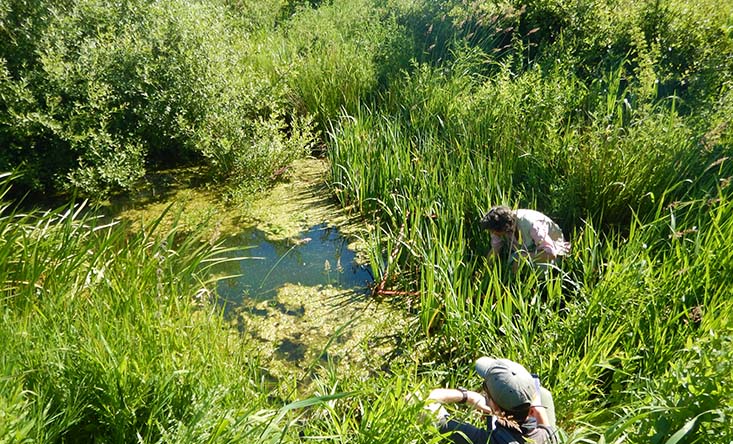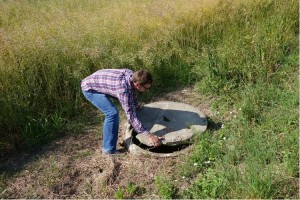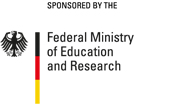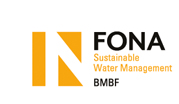MUTReWa
Measures for a more sustainable management of pesticides and their transformation products in regional water management



LONG-TERM PROTECTION OF WATER BODIES FROM PESTICIDES
In the course of European environmental legislation, numerous water management measures have been initiated to improve the ecological status of ground- and surface water in recent years. But when being evaluated, their potential for increasing the mobilisation of trace organic compounds, and in particular their transformation products, have not been taken into account. To date, pesticide transformation products in the aqueous phase which are no longer active in the sense of the parent compound have not been sufficiently studied and thus have not been factored into water management strategies. For this reason, the joint project is addressing processes which concern the mobilisation and transformation of pesticides from intensive agriculture, as well as biocides from urban areas. The partners of the joint project MUTReWa also intend to evaluate the effectiveness and sustainability of selected water management measures to improve the ecological status of ground- and surface water. In collaboration with water managers, recommendations derived from the insights gained shall then be integrated into regional water management strategies.
GOALS
MUTReWa will focus on the transformation behaviour and characteristics of pesticides. In order to minimise the entry of these substances into water bodies, the partners taking part in the joint project intend to develop and validate appropriate water management measures. Further project goals are:
- Improving understanding of pesticide mobilisation and transformation processes in fluvial catchment areas
- Determining the current exposure to selected pesticides and their transformation products, their eco-toxicological relevance, and the potential risks for drinking water
- Assessing the effectiveness and sustainability of selected measures and strategies forminimising the entry of pesticides and their transformation products
- Developing recommendations for adapting and implementing appropriate measures and their implementation in collaboration with key water management players

Photo: Matthias Pfannerstill, Landesamt für Landwirtschaft, Umwelt und ländliche Räume Schleswig-Holstein
MODEL REGIONS
- Catchment area of the Mühlbachin southern Baden-Wurttemberg, southwest of thecity of Freiburg: Themodel region is representative of intensive farmingwithspecial crops(vineyards) and a highly dominantmonoculture(corn)
- Lowland catchment area Kielstau southeast of Flensburg: Characterised by drainages and lateral drains from intensively farmed areas (rape, cereals, corn)
Key messages
- Many transformation products (TPs) were found for the pesticides and biocides being studied. TPs often have a comparable toxicity when it comes to bacteria and macrophytes, but have greater mobility and persistence than their parent compounds.
- Unlike the pesticides being studied, some TPs were detectable as long-term background contamination in the water.
- In some cases the contamination of groundwater, streams and lentic small water bodies with pesticide residues exceeds the environmental quality standards (EQS) and health reference values (HRV). There are no comparable standards for TPs.
- If end-of-pipe measures are chosen, then retention ponds can make contributions with regard to base flow, and wetland areas with regard to event runoff.
- In residential areas it is to be expected that biocidal active substances (e.g. façade paint) will leach into the groundwater by storm water infiltration systems. So the filter effect of existing systems should be monitored.
Further Information
Kontakt
-
Leuphana Universität Lüneburg
Institut für Nachhaltige Chemie und Umweltchemie
Prof. Dr. Klaus Kümmerer
T: +49 4131 677 2893, -2894
M: klaus.kuemmerer@leuphana.de -
Dr. Oliver Olsson
T: Tel.: +49 4131 677 2291
M: oliver.olsson@leuphana.de
Projektpartner
- Leuphana Universität Lüneburg
- Albert-Ludwigs-Universität Freiburg
- Christian-Albrecht-Universität zu Kiel
- Gemeinde Eichstetten am Kaiserstuhl
- Gesellschaft für Freilandökologie und Naturschutzplanung mbH
- Landesamt für Landwirtschaft, Umwelt und ländliche Räume, Schleswig-Holstein
- Stadt Freiburg im Breisgau
- WWL Umweltplanung und Geoinformatik GbR


 Deutsch
Deutsch




